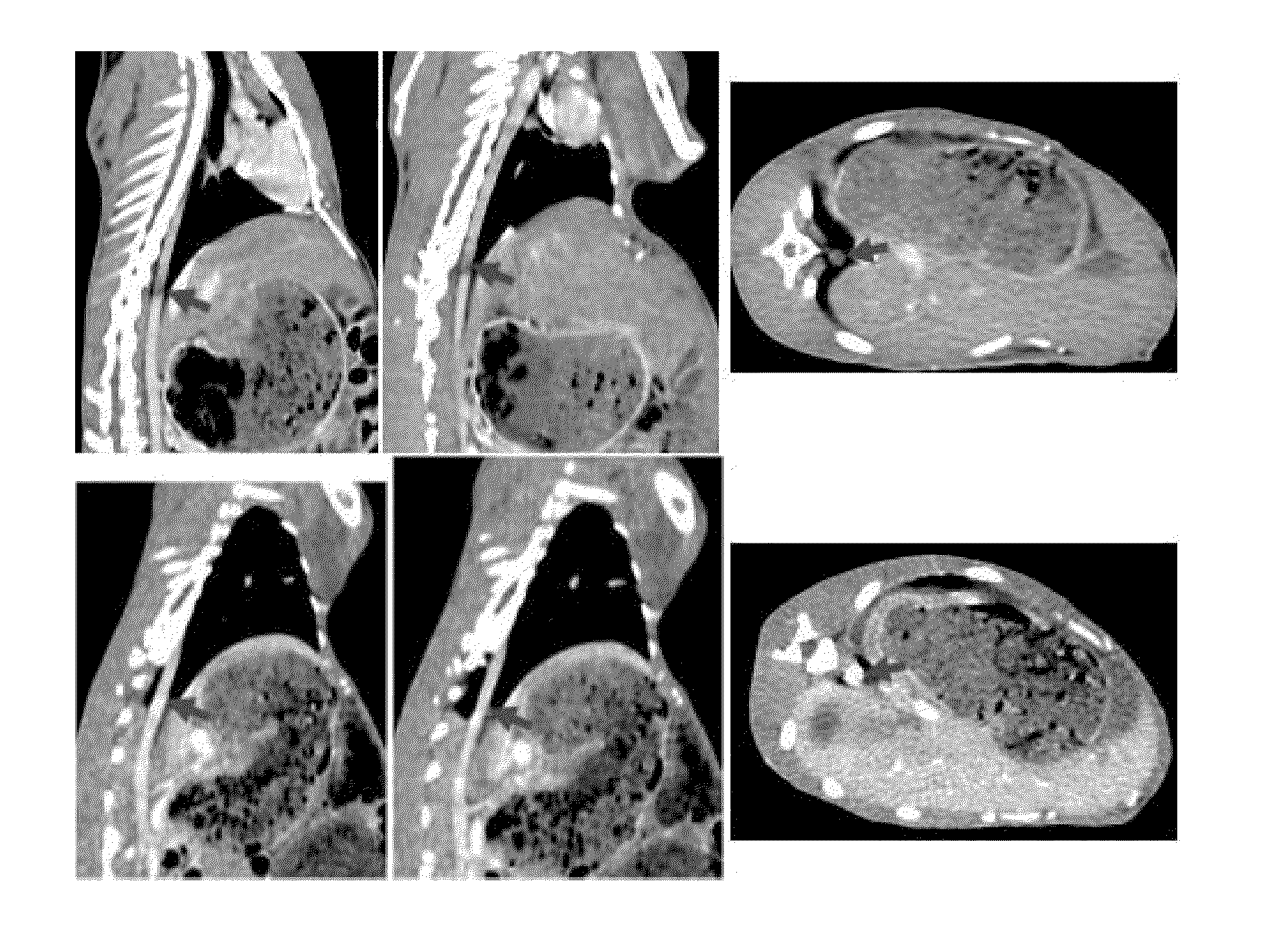Series of drugs using photofrin to catalyze decomposition of hydrogen peroxide
a hydrogen peroxide and photofrin technology, applied in the field of series of drugs using photofrin to catalyze the decomposition of hydrogen peroxide, can solve the problems of low reaction efficiency, difficult acceptance by doctors and patients, and inability to achieve desired effects of pdt in clinic, etc., and achieve the effect of simple operation
- Summary
- Abstract
- Description
- Claims
- Application Information
AI Technical Summary
Benefits of technology
Problems solved by technology
Method used
Image
Examples
example 1
Weak Alkali and .OH Free Radical Catalyzing the Decomposition Reaction of H2O2
[0104]Experimental Methods:
[0105](1) 10 ml vacuum bottles were used, and the vacuum bottles were totally sealed with Kodak photographic film light protecting paper.
[0106](2) H2O2 solutions (in DMF:H2O=1:5) with different concentrations were added to the sealed vacuum bottles.
[0107](3) 5 uM 9,10-dimethylanthracene (DMA) was added. DMA was a kind of 1O2 specific indicator (probe), DMA had intensive fluorescence property, after binding to 1O2, endorperoxide without fluorescence property was formed, so that the amount of the generated 1O2 is in inverse proportion with the content of DMA.
[0108](4) 50 MeV X-ray was used to irradiate the vacuum bottles, with dose of 5Gy, to start the decomposition reaction of H2O2; the reaction was terminated by stopping x-ray irradiation.
[0109](5) or 0.1 mM FeCl3 (FeCl3.6H2O) and 0.1 mM Vit-C were added, to start the decomposition of H2O2, after decomposition of H2O2 for 5 min,...
example 2
Weak Alkali and Photofrin Catalyzing the Decomposition Reaction of H2O2
[0112]Experimental Method:
[0113](1) 10 ml vacuum bottles were used, and the vacuum bottles were totally sealed with Kodak photographic film light protecting paper.
[0114](2) H2O2 solutions (in DMF:H2O=1:5) with different concentrations were added to the sealed vacuum bottles.
[0115](3) 5 uM 9,10-dimethylanthracene (DMA) was added. DMA was a kind of 1O2 specific indicator (probe), DMA had intensive fluorescence property, after binding to 1O2, endorperoxide without fluorescence property was formed, so that the amount of the generated 1O2 is in inverse proportion with the content of DMA.
[0116](4) 15 uM Haematoporphyrin derivative was added, and reacted at 25° C. for 8 h.
[0117]Experimental Results:
[0118]The results show that similar to the decomposition reaction of H2O2 catalyzed by .OH, when the concentration of H2O2 is lower than or equal to 0.15%, the decomposition reaction of H2O2 cannot be catalyzed by haematopor...
example 3
Catalyzing the Decomposition Reaction of H2O2 Using Photofrin and Physical Method (RCDT Method)
[0120]Experimental Method:
[0121](1) 10 ml vacuum bottles were used, and the vacuum bottles were totally sealed with Kodak photographic film light protecting paper.
[0122](2) H2O2 solutions (in DMF:H2O=1:5) with different concentrations were added to the sealed vacuum bottles.
[0123](3) 5 uM 9,10-dimethylanthracene (DMA) was added. DMA was a kind of 1O2 specific indicator (probe), DMA had intensive fluorescence property, after binding to 1O2, endorperoxide without fluorescence property was formed, so that the amount of the generated 1O2 is in inverse proportion with the content of DMA.
[0124](4) 15 uM Haematoporphyrin derivative (HPD) was added, or 15 uM acidified porphyrin (Protoporphyrin IX, PpIX) was added.
[0125](5) The vacuum bottles were irradiated with 10 MeV X-ray for about 1 min, dose of 5Gy, to start the decomposition reaction of H2O2. The reaction was terminated by stopping irradiati...
PUM
| Property | Measurement | Unit |
|---|---|---|
| chemical structure | aaaaa | aaaaa |
| catalytic properties | aaaaa | aaaaa |
| catalytic efficiency | aaaaa | aaaaa |
Abstract
Description
Claims
Application Information
 Login to View More
Login to View More - R&D
- Intellectual Property
- Life Sciences
- Materials
- Tech Scout
- Unparalleled Data Quality
- Higher Quality Content
- 60% Fewer Hallucinations
Browse by: Latest US Patents, China's latest patents, Technical Efficacy Thesaurus, Application Domain, Technology Topic, Popular Technical Reports.
© 2025 PatSnap. All rights reserved.Legal|Privacy policy|Modern Slavery Act Transparency Statement|Sitemap|About US| Contact US: help@patsnap.com



